Brant: Etruscan Chief Tarchon at the Walls of Troy
Annotations
Aeneas arrives at Troy in his ship. He has traveled by sea back to the city. He brings with him Pallas, who stands with him in the ship, and Tarchon, who stands on the shore. The lion which Vergil mentions as a decoration on the prow of Aeneas's ship is included here in a flag held by one of the men on the ship. In the background, Turnus beheads one of Aeneas's allies. This is either an illustration of what Turnus promises to do in lines 276-86, as he sees them amassing on the shore, or an illustration of his violent nature as decribed in lines 150-2.
Woodcut illustration from the “Strasbourg Vergil,” edited by Sebastian Brant: Publii Virgilii Maronis Opera cum quinque vulgatis commentariis expolitissimisque figuris atque imaginibus nuper per Sebastianum Brant superadditis (Strasbourg: Johannis Grieninger, 1502), fol. 351v, executed by an anonymous engraver under the direction of Brant.

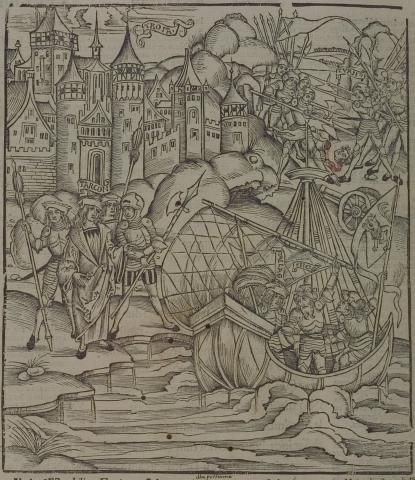
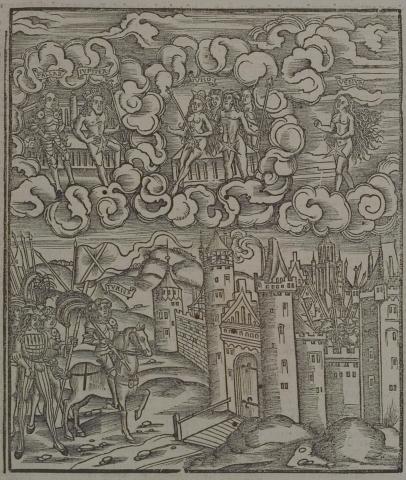
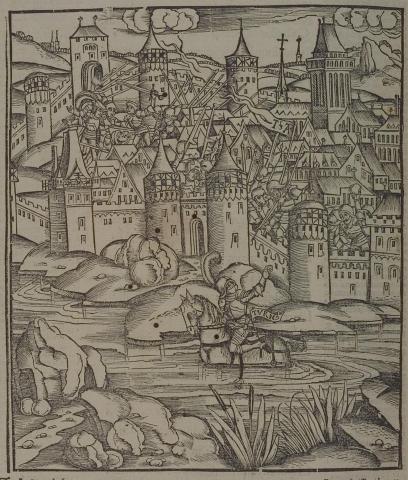
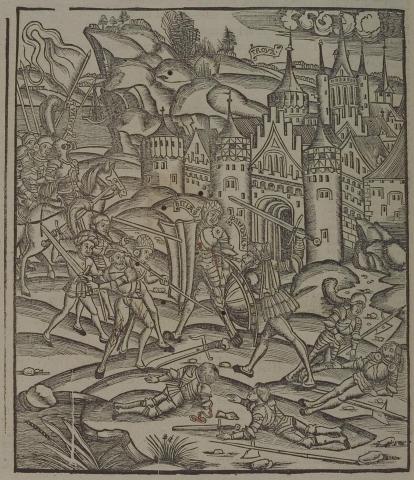
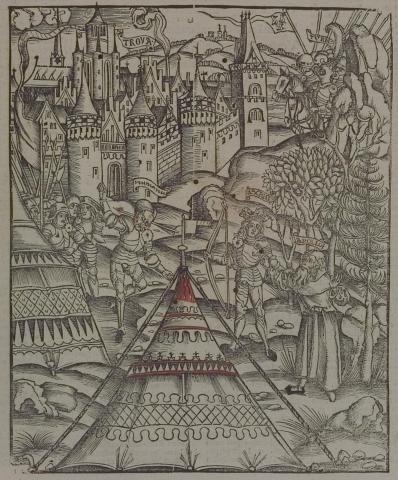
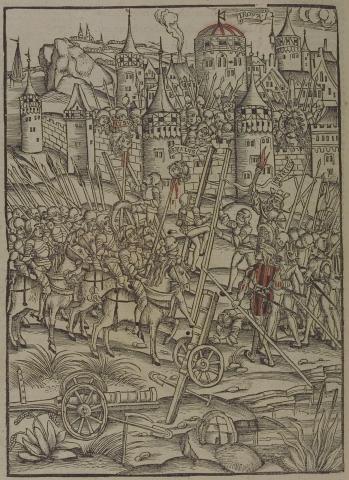
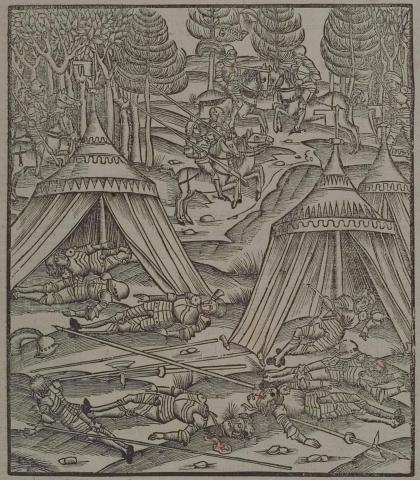
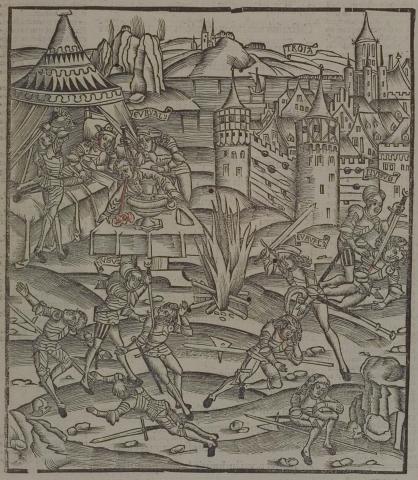
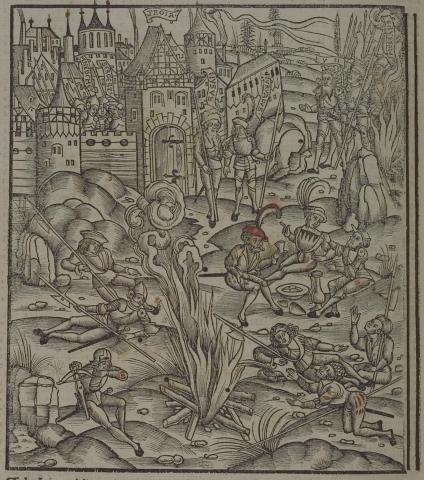
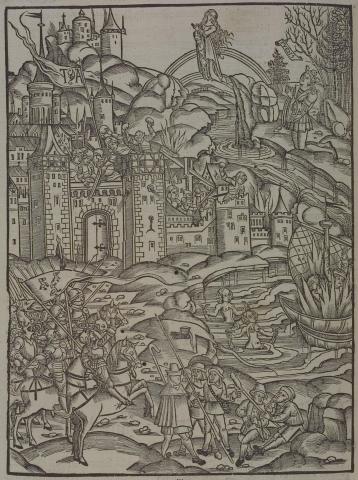
Sebastian Brant (1458-1521) was a humanist scholar of many competencies. Trained in classics and law at the University of Basel, Brant later lectured in jurisprudence there and practiced law in his native city of Strasbourg. While his satirical poem Das Narrenschiff won him considerable standing as a writer, his role in the transmission of Virgil to the Renaissance was at least as important. In 1502 he and Strasbourg printer Johannes Grüninger produced a major edition of Virgil’s works, along with Donatus’ Life and the commentaries of Servius, Landino, and Calderini, with more than two hundred woodcut illustrations. (Annabel Patterson)